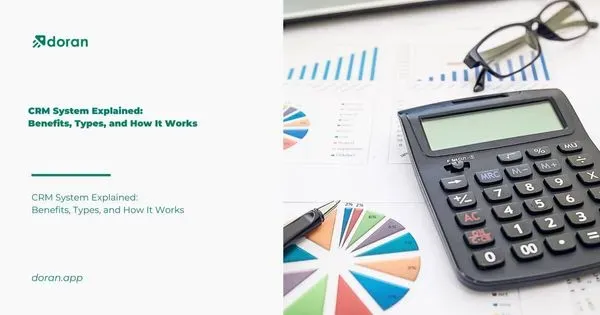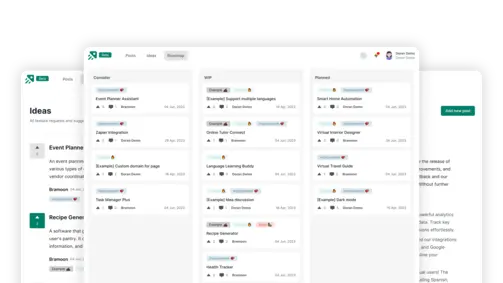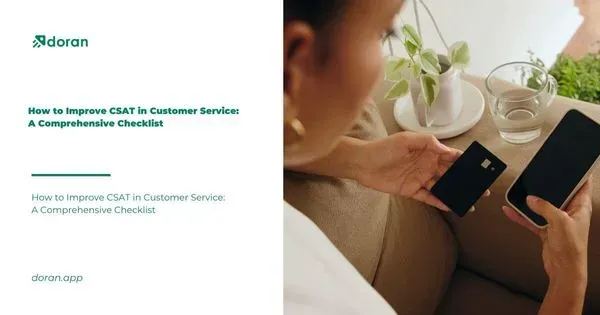Implementing In-App NPS Survey: A User-Centric Approach
Create changelog and product roadmap for your product
Explore nowTable of contents 6 min
In-app NPS (Net Promoter Score) surveys have revolutionized how businesses gather feedback directly from users within their applications. These surveys offer a convenient and immediate way to gauge user satisfaction, loyalty, and recommendations while users are actively engaged with the app. Understanding the significance and best practices of in-app NPS surveys is crucial for companies striving to improve user experiences and refine their app’s functionalities.
An In-app NPS Survey: What is it?
An in-app net promoter score (NPS) survey asks users if they would suggest your product to others in order to measure their level of happiness and loyalty.
Usually, there are two questions asked: a follow-up question that is qualitative in nature and asks for more comprehensive input, and an 11-point scale (ranging from 0-10) to gather quantitative feedback.
Read more: 30 Must-have Customer Feedback Survey Questions
How is the Net Promoter Score Determined?
You must first gather in-app survey responses in order to compute the Net Promoter Score (NPS). Users are classified as detractors, passives, or promoters based on their NPS scores.
Customers that are dissatisfied with your product and aren’t hesitant to express it are known as detractors (rated 0-6).
Passives (rated 7 or 8): Passives are intermediaries who don’t demonstrate any enthusiasm or special interest in recommending your goods to others.
Customers that provide positive reviews are known as promoters (rated 9 or 10). Most of them are devoted customers who frequently utilize your SaaS product and promote it whenever possible.
In calculating the NPS score, take the number of detractors and subtract it from the promoters and divide it by the total number of respondents gathered.
NPS = (Number of Promoters – Number of Detractors) / (Number of Respondents) x 100
Find out more: Different Types of Customer Feedback & Tips to Collect Them
8 Examples of In-App NPS Survey Examples to Efficiently Measure Customer Happiness
We’ve included some of the top SaaS company in-app survey examples in this section. Take inspiration from this when creating your own survey.
Gather Input from Clients during the Onboarding Process to Promote Product Adoption

The ongoing process of actively assisting users in realizing the benefits of your product is known as user onboarding. Users may determine whether your product is worthwhile very soon by evaluating the quality of your onboarding process.
For this reason, Userpilot uses in-app NPS surveys to collect insightful data on the onboarding process.
Rather than posing the question “How likely are they to refer your product?” (which would be ridiculous at this point), they focus on onboarding in order to make it more precise.
This makes it simple to find and eliminate onboarding obstacles that might be preventing users from adopting the product sooner.
Make In-App NPS Survey messages more Approachable by Humanizing them

Starting with the onboarding process, Slack endeavors to customize its user experience. It follows that the tone of their in-app NPS survey is informal and welcoming.
Slack immediately presents a member of their marketing team, which humanizes and makes the survey message more approachable. The respondent feels valued and the atmosphere is lifted by this.
Slack exemplifies effective user communication without coming across as spammy. As a result, both their response rate and the quality of their NPS comments rise.
In-App NPS Survey should Include Context to Boost Response Rates

SaaS companies can learn a lot from Sonic’s NPS program. It is incredibly persuasive, accurate, and gives the respondent a sense of belonging to a significant endeavor.
They appropriately use conversational language when adding a contextual message to NPS questionnaires. Respondents feel more important and that their opinions are valued as a result.
Reading this encourages users to spend their time responding, which improves their NPS data.
To Enhance the User Experience, Place In-App NPS Survey at the Bottom of the Screen

It’s not necessary for in-app NPS surveys to be intrusive, as Retently is showing us. They position their NPS survey near the bottom of the screen as opposed to a sizable modal pop-up that may be bothersome.
In their own time, users can complete their open tasks and offer comments. Retently also streamlines their survey so that users just need to click once to complete it.
Make Use of In-App NPS Survey Banners to Keep UI Elements Clear

Asana chooses to cover notification banners instead of buttons or other UI elements in the overlaying example above, which is more visible. Banners are straightforward instruments having the ability to convey a message without interfering with the user’s experience.
Asana’s example of an in-app survey is excellent since it has a minimalistic style and integrates seamlessly with its user interface. They also pose a single, straightforward question that consumers may answer without becoming distracted.
Allow Users to Withdraw At Any Time

The purpose of the NPS survey is to get users’ honest thoughts; don’t force them into doing so. JustworksHR’s example demonstrates how to accomplish this perfectly.
A straightforward opt-out option makes the surveys feel less compelled and more free. It is easily dismissed by users if the moment is not appropriate. They can get better responses and boost the legitimacy of their NPS survey responses by taking just one simple step.
Ask a Follow-up Question to Get more In-depth Answers

While using a number scale provides useful feedback, gathering follow-up questions is really important. This is an excellent way to get insightful comments and qualitative answers.
Users are able to explain their scores and express their thoughts. You can see how this functions with Groove. Users can always respond if they score both ways because their follow-up question expressly asks them why they left the score.
Utilize the Feedback Tab to more gently Get In-App NPS Survey responses

Similar to banners, feedback tabs are an excellent means of non-intrusively gathering in-app NPS surveys. A feedback tab is a button that can be clicked to begin a survey form. It is typically shown on the side of a screen.
Users are less distracted while working because it operates in the background more subtly and frequently integrates with the user interface. Additionally, because it’s constantly on, users can simply leave feedback at any time, which makes it a fantastic substitute for pop-ups.
In conclusion, integrating in-app NPS surveys into applications can significantly impact user experiences and business success. By leveraging in-app surveys to collect real-time feedback, businesses can identify strengths, address weaknesses, and prioritize enhancements that align with user preferences, ultimately fostering higher satisfaction and stronger user loyalty.
What to not miss out on our blog
Gain insightful knowledge and invaluable experiences from dedicated experts.

CRM System Explained: Benefits, Types, and How It Works
Discover everything about CRM system. Learn the benefits and how a CRM system works to improve customer relationships and streamline business operations.

Are you ready? Start your free trial today.
Enhance communication, keep track of the progress, understand customers' insight and more by taking your first trial on Doran.
Sign up for free

